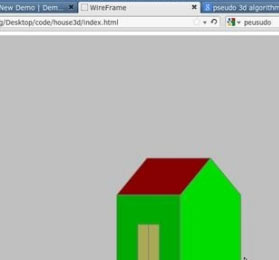HOW TO: Compute and Compare Hash Values Using Visual Basic .NET_.NET教程_编程技术
2013-12-20 14:23:36
[小 大]
已经帮助:人解决问题
visual
HOW TO: Compute and Compare Hash Values Using Visual Basic .NET--------------------------------------------------------------------------------
The information in this article applies to:
Microsoft Visual Basic .NET Beta 2
--------------------------------------------------------------------------------
This article discusses a Beta release of a Microsoft product. The information in this article is provided as-is and is subject to change without notice.
No formal product support is available from Microsoft for this Beta product. For information about obtaining support for a Beta release, please see the documentation included with the Beta product files, or check the Web location from which you downloaded the release.
For a Microsoft C# .NET version of this article, see Q307020 .
IN THIS TASK
SUMMARY
Requirements
Compute a Hash Value
Compare Two Hash Values
Complete Code Listing
REFERENCES
SUMMARY
The System.Security.Cryptography classes in the Microsoft .NET Framework make it easy to compute a hash value for your source data. This article shows how to obtain a hash value and how to compare two hash values to check whether they are identical.
back to the top
Requirements
The following list outlines the recommended hardware, software, network infrastructure, and service packs that you will need:
Microsoft Visual Studio .NET
back to the top
Compute a Hash Value
It is easy to generate and compare hash values using the cryptographic resources contained in the System.Security.Cryptography namespace. Because all hash functions take input of type Byte[] , it might be necessary to convert the source into a byte array before it is hashed. To create a hash for a string value, follow these steps:
Open Visual Studio .NET.
Create a new Console Application in Visual Basic .NET. Visual Studio .NET creates a Module for you along with an empty Main() procedure.
Make sure that the project references the System and System.Security namespaces.
Use the Imports statement on the System , System.Security , System.Security.Cryptographic , and System.Text namespaces so that you are not required to qualify declarations from these namespaces later in your code. These statements must be used prior to any other declarations.
Imports System
Imports System.Security
Imports System.Security.Cryptography
Imports System.Text
Declare a string variable to hold your source data, and two byte arrays (of undefined size) to hold the source bytes and the resulting hash value.
Dim sSourceData As String
Dim tmpSource() As Byte
Dim tmpHash() As Byte
Use the GetBytes() function, which is part of the System.Text.ASCIIEncoding.ASCII class, to convert your source string into an array of bytes (required as input to the hashing function).
sSourceData = "MySourceData"
'Create a byte array from source data.
tmpSource = ASCIIEncoding.ASCII.GetBytes(sSourceData)
Compute the MD5 hash for your source data by calling ComputeHash on an instance of the MD5CryptoServiceProvider class. Note that to compute another hash value, you will need to create another instance of the class.
'Compute hash based on source data.
tmpHash = New MD5CryptoServiceProvider().ComputeHash(tmpSource)
The tmpHash byte array now holds the computed hash value (128-bit value=16 bytes) for your source data. It is often useful to display or store a value like this as a hexadecimal string, which the following code accomplishes:
Console.WriteLine(ByteArrayToString(tmpHash))
Private Function ByteArrayToString(ByVal arrInput() As Byte) As String
Dim i As Integer
Dim sOutput As New StringBuilder(arrInput.Length)
For i = 0 To arrInput.Length - 1
sOutput.Append(arrInput(i).ToString("X2"))
Next
Return sOutput.ToString()
End Function
Save and then run your code to see the resulting hexadecimal string for the source value.
back to the top
Compare Two Hash Values
One of the purposes of creating a hash from source data is to provide a way to see if data has changed over time, or to compare two values without ever working with the actual values. In either case, you need to compare two computed hashes, which is easy if they are both stored as hexadecimal strings (as in the last step of the above section). However, it is quite possible that they will both be in the form of byte arrays. The following code, which continues from the code created in the previous section, shows how to compare two byte arrays.
Just below the creation of a hexadecimal string, create a new hash value based on new source data.
sSourceData = "NotMySourceData"
tmpSource = ASCIIEncoding.ASCII.GetBytes(sSourceData)
Dim tmpNewHash() As Byte
Dim bEqual As Boolean = False
tmpNewHash = New MD5CryptoServiceProvider().ComputeHash(tmpSource)
The most straightforward way to compare two byte arrays is to loop through the arrays, comparing each individual element to its counterpart from the second value. If any elements are different, or if the two arrays are not the same size, the two values are not equal.
If tmpNewHash.Length = tmpHash.Length Then
Dim i As Integer
Do While (i < tmpNewHash.Length) AndAlso (tmpNewHash(i) = tmpHash(i))
i += 1
Loop
If i = tmpNewHash.Length Then
bEqual = True
End If
End If
If bEqual Then
Console.WriteLine("The two hash values are the same")
Else
Console.WriteLine("The two hash values are not the same")
End If
Console.ReadLine()
Save and then run your project to view the hexadecimal string created from the first hash value, and to find out if the new hash is equal to the original.
back to the top
Complete Code Listing
Imports System
Imports System.Security
Imports System.Security.Cryptography
Imports System.Text
Module Module1
Sub Main()
Dim sSourceData As String
Dim tmpSource() As Byte
Dim tmpHash() As Byte
sSourceData = "MySourceData"
'Create a byte array from source data.
tmpSource = ASCIIEncoding.ASCII.GetBytes(sSourceData)
'Compute hash based on source data.
tmpHash = New MD5CryptoServiceProvider().ComputeHash(tmpSource)
Console.WriteLine(ByteArrayToString(tmpHash))
sSourceData = "NotMySourceData"
tmpSource = ASCIIEncoding.ASCII.GetBytes(sSourceData)
Dim tmpNewHash() As Byte
Dim bEqual As Boolean = False
tmpNewHash = New MD5CryptoServiceProvider().ComputeHash(tmpSource)
If tmpNewHash.Length = tmpHash.Length Then
Dim i As Integer
Do While (i < tmpNewHash.Length) AndAlso (tmpNewHash(i) = tmpHash(i))
i += 1
Loop
If i = tmpNewHash.Length Then
bEqual = True
End If
End If
If bEqual Then
Console.WriteLine("The two hash values are the same")
Else
Console.WriteLine("The two hash values are not the same")
End If
Console.ReadLine()
End Sub
Private Function ByteArrayToString(ByVal arrInput() As Byte) As String
Dim i As Integer
Dim sOutput As New StringBuilder(arrInput.Length)
For i = 0 To arrInput.Length - 1
sOutput.Append(arrInput(i).ToString("X2"))
Next
Return sOutput.ToString()
End Function
End Module
back to the top
REFERENCES
For more information on using the cryptographic features of the Microsoft .NET Framework, and on cryptography in general, see the following links:
"The MD5 Message-Digest Algorithm"
http://theory.lcs.mit.edu/~cis/pubs/rivest/Rivest-MD5.txt
"What Is a Hashing Function?"
http://www.rsasecurity.com/rsalabs/faq/2-1-6.html
MSDN Online .NET Developer Web site
http://msdn.microsoft.com/net
back to the top
(责任编辑:)
友情链接:联系人:QQ370158739




